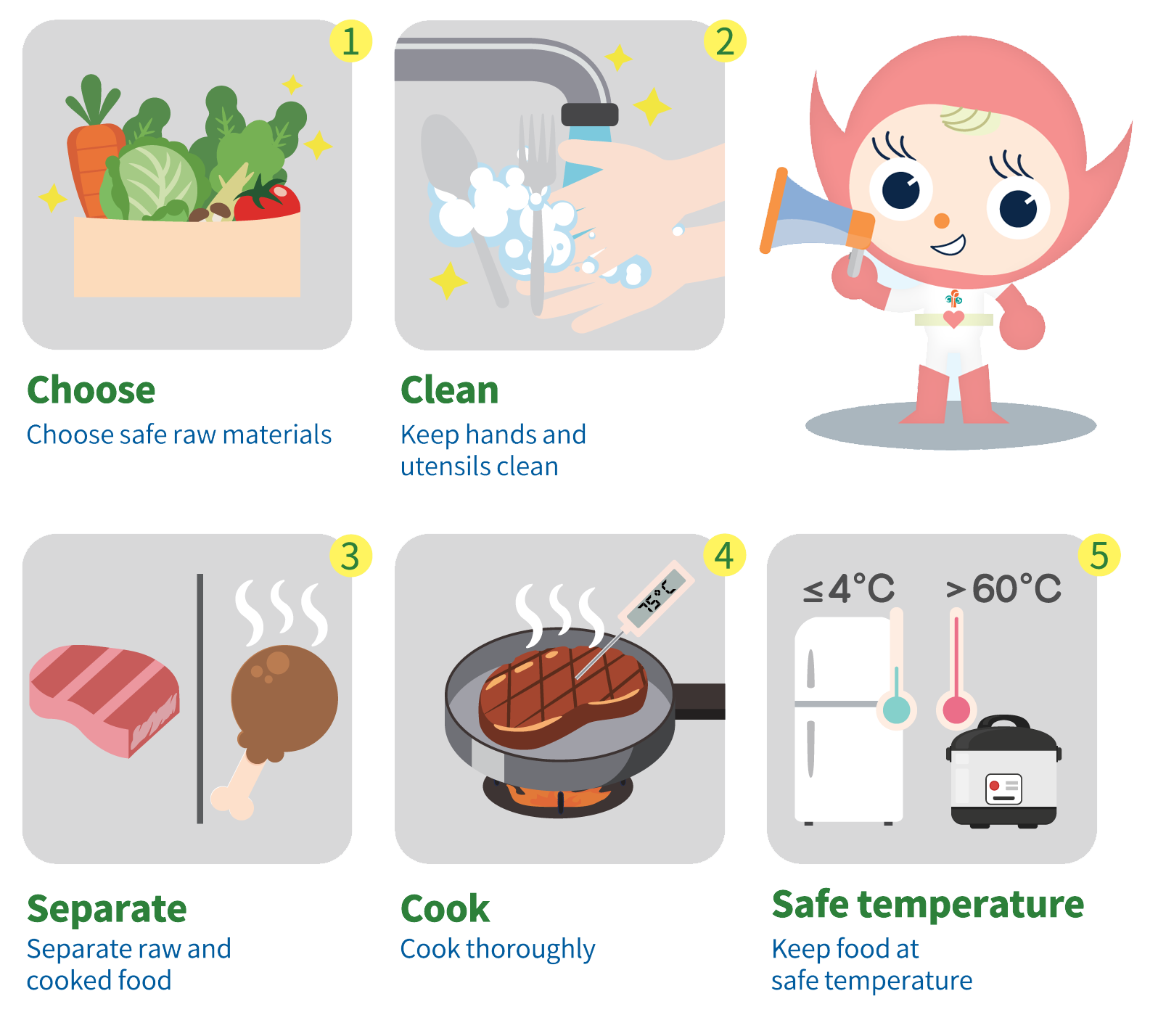A food handler is any person who engages in the handling of food or equipment or utensils that will come into contact with food in a food business. In the course of business, food handlers may do many different things such as purchasing, receiving, preparing, cooking, serving, packing, displaying, storing and processing food.
Food handlers may also be a source of food contamination if they are unable to comply with the GHPs. They should be mindful of their responsibility for food safety when carrying out their jobs no matter they are chefs, waiters / waitresses or cleaning staff.
The purpose of "Safe Kitchen" is to empower food handlers with the information needed to promote and apply the GHPs. This page is organised into four sections focusing on the following topics: (1) Food Hazards and Food Foodborne Diseases; (2) Personal Hygiene; (3) Safe Food Handling; and (4) Food Premises Sanitation. Food handlers should put the information into day-to-day practice to ensure food safety. The Introduction section contains the most recent news and training materials about "Safe Kitchen", as well as additional food safety topics in the Other Food Safety Issues section.
Five Keys to Food Safety: Ensuring Food Hygiene
Food poisoning cases in local food premises over the past few years were mainly caused by bacteria as a result of inadequate cooking, cross-contamination and improper storage temperature. To prevent food poisoning, food traders should follow the "Five Keys to Food Safety" as below:
The Five Keys to Food Safety include:
1. Choose: Choose safe raw materials
2. Clean: Keep hands and utensils clean
3. Separate: Separate raw and cooked food
4. Cook: Cook thoroughly
5. Safe temperature: Keep food at safe temperature

Good Hygiene Practices: Extension of the Five Keys
Food may be contaminated during production, including the process of purchasing raw materials, cooking, storage and transportation. The purpose of applying GHPs is to prevent contamination hazards in food, ensuring that it is ultimately safe and food hygiene is maintained.
GHPs are an extension of the "Five Keys" to cover personal hygiene, environmental hygiene and food hygiene. Apart from preventing contaminants during food production and maintenance of well-equipped establishment, the following six aspects should also be addressed: personal hygiene, environmental hygiene, operation monitoring, product information, food delivery and on-going training. GHPs are fundamental to ensuring food safety in food premises. Implementing GHPs can enhance productivity and protect consumers' health at the same time.
On-going Training
On-going training is an important element of GHPs. As many staff involved in food-related activities lack the food safety and hygiene knowledge required, inadequate training and supervision pose a potential threat to food safety. Food handlers, full-time, part-time or temporary, should be trained in food hygiene to a level appropriate to the operations they are to perform.